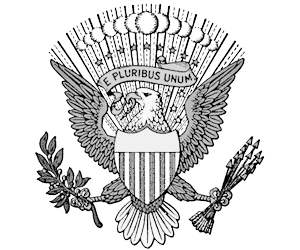|
|
|
|
|
The goal of the abolitionist movement in the industrialized free states of the North was the emancipation of slaves in the agricultural slave states of the south that depended on slave labor for their cash crop economy.
Abolitionist Movement for kids: Background History
What was the Goal of the Abolitionist Movement?
When did Abolitionist Movement begin?
Abolitionist Movement Facts and Timeline 1688: Dutch and German Quakers published a pamphlet denouncing the practice of slavery 1725 - 1750: The First Great Awakening began in 1725, sparked by George Whitefield bringing about activism in social reform 1775: Abolitionist Society - Anthony Benezet of Philadelphia founds the world’s first abolitionist society. 1787: Benjamin Franklin becomes the president of the Abolitionist Society in 1787. 1791–1804: A slave revolt started on the coffee and sugar plantations in the French colony of Saint-Domingue in Haiti. Over 60,000 people were killed 1793: The invention of the Eli Whitney Cotton Gin had a huge impact on slavery turning cotton into a cash crop, using the slave plantation system of farming 1793: Fugitive Slave Act outlaws any efforts to impede the capture of runaway slaves. 1800: Gabriel Prosser slave uprising in Virginia 1803: Igbo Landing slave uprising in Georgia 1805: Chatham Manor slave uprising in Virginia 1807: The British Slave Trade Act was passed abolished the slave trade in the British Empire, but not slavery itself. 1807: The United States 'Act Prohibiting Importation of Slaves of 1807', was passed by Congress stating that no new slaves were permitted to be imported into the United States which ended the legality of the U.S. based transatlantic slave trade. 1811: German Coast Uprising slave uprising in Louisiana 1815: George Boxley slave uprising in Virginia 1820: The Missouri Compromise maintained the balance of slave states and free states 1822: Denmark Vesey slave uprising in South Carolina 1828: New York State abolishes slavery 1829: David Walker's Appeal, a radical anti-slavery document, was published in September calling for slaves to rebel against their owners 1830:Ohio's "Black Laws" encourage African-Americans to migrate to Canada, establishing free colonies that became important on the Underground Railroad 1830: William Ellery Channing writes the 'Discourse on Spiritual Freedom' proposing that slaves should be set free, and their owners paid from the sale of government owned lands. 1830: The Second Great Awakening begins leading to the establishment of the reform movements in which people advocated for emancipation on religious grounds. 1830: The Abolishment Movement is established 1830: Discourse on Spiritual Freedom written by William Ellery Channing proposing that slaves should be set free, and their owners paid from the sale of government owned lands. 1830 The National Negro Convention for freed African-Americans is held in Philadelphia. 1831: William Lloyd Garrison begins the publication of the Liberator and proposes complete abolition of slavery without payment to slave owners. 1831: Nat Turner's Rebellion took place in Southampton County, Virginia. It was suppressed after just 48 hours. 1831: Bloody, retaliatory acts of revenge were inflicted on slaves throughout the South due to hysteria caused by Turner's revolt 1832: The terrible acts of revenge led to the formation of groups dedicated to helping slaves escape which become known collectively as the Underground Railroad 1833: The American Anti-slavery Society was formed 1834: Great Britain abolishes slavery in its colonies 1836: John Quincy Adams, once President, was now a member of the House of Representatives where he fought against slavery and the 'Gag Rule' 1837: Abolitionist Elijah Lovejoy establishes the antislavery publication, the Alton Observer and is murdered 1838: Frederick Douglass escapes slavery and becomes active in the abolitionist cause. 1839: The Amistad Slave Ship revolt occured off the coast of Cuba on July 2, 1839. The Africans were defended by John Quincy Adams 1846: The Wilmot Proviso, prohibiting slavery in any territory taken from Mexico, is passed in the House, but defeated in the Senate. The Wilmot Proviso ends the Gag Rule opening the subject of slavery in congress 1847: Escaped Slave Frederick Douglass begins publication of the North Star in New York 1848: Mexican Cession of western territory to the United States; North and South resume struggle over the status of slavery in federal territory. 1849: Harriet Tubman Escapes and returns south at least 15 times to help rescue several hundred other slaves 1850: Compromise of 1850. In exchange for California entering the Union as a free state, northern congressmen accept a harsher 1850 Fugitive Slave Act 1852: Abolitionist Harriet Beecher Stowe publishes Uncle Tom’s Cabin. 300,000 copies are sold within a year of publication 1854: The Kansas- Nebraska Act is passed allowing these two new territories to choose whether to allow slavery according to the principle of "popular sovereignty" refer to Popular Sovereignty and Slavery. Many Abolitionists joined the newly formed Republican Party. 1854 -1861: Bleeding Kansas - A series of violent events involving abolitionists (including John Brown) and pro-Slavery factions that took place in Kansas Territory 1857: Dred Scott Court Decision which stated that slaves were not citizens but the property of their owners and that Congress has no authority to outlaw slavery in any territory 1859: Abolitionist John Brown and his raid at the federal arsenal in Harper’s Ferry, Virginia. 1860: Southern Secession begins. South Carolina secedes in December and more states follow in 1861. 1861: The beginning of the Civil War - also refer to Causes of the Civil War 1863: Abraham Lincoln’s Emancipation Proclamation declaring all slaves in Rebel territory are free on January 1, 1863 1865: The End of the Civil War. The 13th Amendment is added to the Constitution, abolishing slavery. |
| US American History |
| 1829-1841: Jacksonian Era |
|
|
|
|
|
First Published2016-04-19 | |||
|
Updated 2018-01-01 |
Publisher
Siteseen Limited
| ||
|
|

